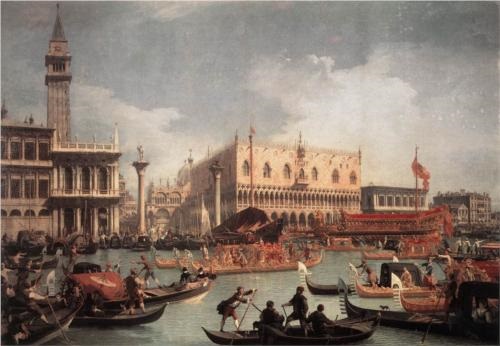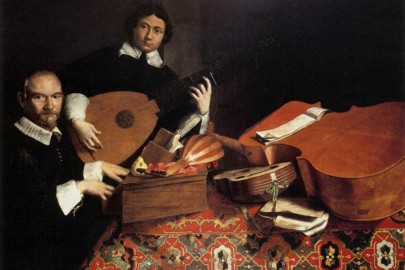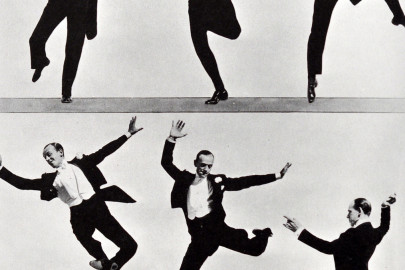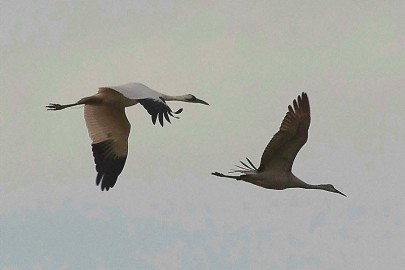Mahlerman starts 2014 in glorious fashion with the ‘rebirth’ of music in Venice…
The Renaissance period, in art, literature and music is generally said, for convenience, to begin around 1400 and pass into the Baroque two hundred years later; and though this ‘rebirth’ may be true of painting and sculpture – and literature – it is wide of the mark in music. I would push forward another fifty years to the fall of Constantinople (1453) and say that if you are looking for signs for music ‘to be reborn’, then you have to look at that date and the two hundred years that followed it, and you need to look at Venice and the beautiful countryside around it. There you will find the origins of the Venetian School, and men such as Giovanni Bassano and Claudio Merulo expanding the musical landscape. And there were others….
Although Venice is, of course, a visual feast to nourish even the most jaded palate, it may also be said with safety that it was, in the 16th and 17th Century above all, a musical city. It was Nietzsche who said, in Ecce Homo ‘if I try to find a new word for music, I can never find any other than Venice’. And it was the two Gabrielis, Andrea and the more important Giovanni, uncle and nephew, who extended and developed polyphonic sacred music to a level of perfection undreamed of in the more conservative Roman School or, for that matter in Flanders or Spain, where movements were also afoot. Here, part of a liturgical reconstruction of the celebration for the coronation of Doge Marino Grimani, on the morning of April 27th, 1595, the Sonata(6)a 8 ‘pian e forte’. The truly wonderful oil painting is a self-portrait (with family) by the Flemish teacher of Peter Paul Rubens, Otto van Veen, painted a few years before this plangent music was composed.
Very little is known about the litigious, concupiscent Tarquinio Merula, but the little that is known reveals a difficult, unsavoury character, but a brilliant, visionary composer. He replaced Monteverdi’s deputy Alessandro Grandi at St Mark’s in Venice, but was quickly dismissed for ‘gross indecency’ towards some of the choirboys. He occupied several posts in Italy – Cremona & Lodi, as well as a brief spell in Poland, in the service of King Sigismund III, and was recognised in his lifetime as one of the most progressive composers of the early Baroque. Here is an early bit of Euro-rock ‘n’ roll, the Ciaccona, with a repeating ground-base grumbling under the treble ornamentation, skating wildly above. Try and keep your foot still.
Generally speaking, if the Renaissance period displayed conservatism, assuredness and self-reliance, the Baroque era was 150 years of ecstasy and exuberance. If a ‘philosophy’ existed, it would represent the emotions (called ‘affections’ 300 years ago), and seek to excite the emotions of the listeners. This it did, setting itself apart from, and ahead of the rigid structure, the stile antico of the Renaissance. Before 1600, the church had been at the very centre of music, and the voice dominated. After 1600 the violin became the main instrument, and toward the end of that century appeared another Venetian who would take opera and instrumental music to new heights. His name was Antonio Vivaldi. He was born around 1675, and became a priest in 1703, spending most of the rest of his life (d. 1741) attached to the Conservatorio dell’ Ospedale della Pieta, one of the four famous music schools for girls in Venice. The huge popularity of his series of violin concertos The Four Seasons has rather overshadowed his enormous output, most of it set at a very high level – and in recent years the dust has been blown off one or two of the dozens of operas he wrote, revealing some unexpected riches, including Giustino (RV717), written for the 1724 carnival season in Rome. From this great work, the aria of Anastasio ‘Vedro con mio diletto‘ (‘I will see with joy’), sung by the French Countertenor Philippe Jaroussky.
The death of Palestrina in 1594 marked the end of a musical era, the madrigal having been taken to its highest point, or so it was thought. Music needed to go somewhere, needed to develop, and it so happened that the man to take it there was a conductor and composer in his mid-forties from Cremona, who had recently taken up a position at San Marco in Venice, one Claudio Monteverdi. His wife had died a few years earlier in 1607, at the same moment as he was virtually inventing modern opera with Orfeo, a dramatic and musical masterpiece. A sensational success followed a year later with the central Lamento from his Arianna, and he went on into old age composing, unbelievably in his 70’s, both Ritorno d’Ulisse and, in 1642, his final masterpiece L’Incoronazione di Poppea. The eighth book of madrigals were published toward the end of his life in 1638, and are the culmination of this form of expression. The composer attached the name “madrigals of war and love” to the collection of almost 40 pieces culled from twenty years of work. The agitated, dotted music of war forms the first half, but mid-way through the second half of madrigali amorosi comes an aria that must have stopped the clocks in Venice. The Lamento Della Ninfa is in three sections, and scored for solo soprano, a male trio, and a deep four note ground bass. The men are held in strict check, the soprano can ‘express herself freely’. The result is devastating, and I can think of no better start to the new year than this.












Glorious sounds Mahlerman. Happy new year – and welcome back!
Thanks Nige……but where have I been?